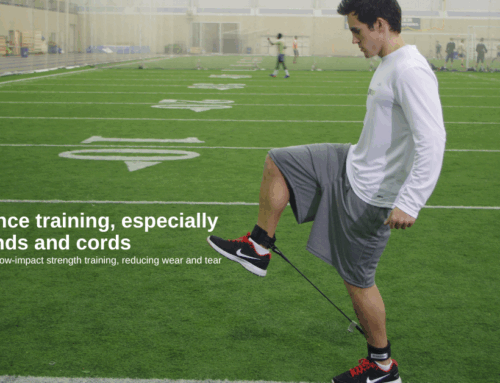Osteoporosis, a condition characterized by the weakening of bones, is a significant health concern, especially among the aging population. As bones lose density and become more fragile, the risk of fractures and breaks increases. While many factors contribute to the development of osteoporosis, one effective way to combat its onset and progression is through resistance training. In this blog, we will delve into the connection between resistance training and osteoporosis, exploring the benefits and providing insights into incorporating this form of exercise into a bone-healthy lifestyle.
Understanding Osteoporosis:
Before delving into the role of resistance training, it’s crucial to understand the basics of osteoporosis. Bones are dynamic structures that constantly undergo a process of renewal, with old bone tissue being replaced by new. However, as individuals age, this balance can be disrupted. Osteoporosis occurs when the creation of new bone doesn’t keep up with the removal of old bone, leading to a loss of bone density and strength.
The Role of Resistance Training:
Resistance training, also known as strength or weight training, involves using resistance to build muscle strength and endurance. While its benefits for muscle development are well-known, its positive impact on bone health is often overlooked. When we engage in resistance training, the stress placed on our bones prompts them to adapt by increasing density and strength.
Increased Bone Density:
- Resistance training places mechanical stress on bones, stimulating the osteoblasts – the cells responsible for bone formation. This stimulation leads to an increase in bone density over time. Weight-bearing exercises such as squats, deadlifts, and bench presses, when performed with proper technique, can be particularly effective in promoting bone density.
Muscle-Bone Interaction:
- The relationship between muscles and bones is symbiotic. As muscles contract during resistance exercises, they pull on bones, promoting bone density. In turn, stronger bones provide a better foundation for muscles, creating a positive feedback loop. This interdependence is crucial for overall musculoskeletal health.
Balance and Fall Prevention:
- Osteoporosis not only weakens bones but also increases the risk of falls and fractures. Resistance training improves balance, coordination, and proprioception, reducing the likelihood of falls. By strengthening the muscles around joints, individuals are better equipped to maintain stability and prevent accidents that could lead to fractures.
Hormonal Benefits:
- Hormones play a vital role in bone health, and resistance training can positively influence hormone levels. For example, growth hormone and testosterone, both of which are stimulated during resistance exercises, contribute to bone formation. This hormonal response is beneficial for maintaining bone density, especially in postmenopausal women who are more susceptible to osteoporosis.
Incorporating Resistance Training into Your Routine:
Now that we understand the benefits, let’s explore how to incorporate resistance training into a routine that promotes bone health:
Consult with a Professional:
- Before starting any exercise program, especially for individuals with pre-existing conditions, it’s essential to consult with a healthcare professional or a certified fitness trainer. They can provide guidance on suitable exercises and intensity levels.
Varied Exercises:
- Include a variety of resistance exercises that target different muscle groups and bones. This diversity ensures comprehensive stimulation for bone remodeling. A well-rounded routine may include weight-bearing exercises, bodyweight exercises, and resistance machine workouts. Our MediCordz® Door Mount Strap Kit and the Wall Mount Kit are great tools to have at home to work out the whole body.
Progressive Overload:
- To continue reaping the benefits of resistance training, it’s crucial to progressively increase the intensity of your workouts. This can be achieved by gradually adding more resistance, increasing the number of repetitions, or adjusting other variables in your exercise routine.
Consistency is Key:
- Like any form of exercise, consistency is crucial. Aim for at least two to three resistance training sessions per week, allowing sufficient time for recovery between sessions. Consistent, long-term engagement in resistance training is essential for maintaining and improving bone health.
Conclusion:
Resistance training is a powerful ally in the fight against osteoporosis. By promoting bone density, improving muscle-bone interaction, enhancing balance, and influencing hormonal balance, this form of exercise offers a holistic approach to maintaining strong and healthy bones. Whether you’re a fitness enthusiast or someone looking to enhance bone health, incorporating resistance training into your routine can be a proactive step towards preventing osteoporosis and enjoying a more robust and active lifestyle as you age.





